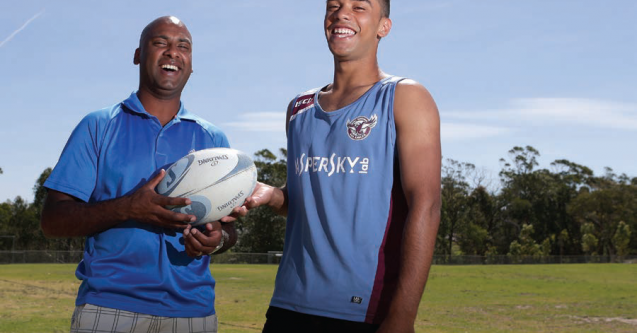A world of possibilities
17 March 2014

The Salvation Army’s Adrian Kistan says indigenous young people are half as likely to complete Year 12, than non-indigenous and only 44 per cent of Aboriginal people are in mainstream employment. Forty-four per 1000 indigenous young people are under juvenile justice supervision, compared with three per 1000 non-indigenous youth.
“When it comes to challenges indigenous young people face, there is no quick fix. It is labour intensive and requires individuals to stand in the gap to help young people thrive and achieve their dreams.” – Adrian Kistan
For Kyle, one of a number of teenagers living in The Salvation Army’s Indigenous Community House in Sydney, dreams really do come true.
Having just signed a three-year deal with the Manly Sea Eagles NRL team, Kyle says: “Coming from a small town is pretty hard, but everyone has a dream they can reach.”
The Salvation Army Community House is a partnership between The Salvation Army and Northern Beaches Christian School.
Indigenous students from remote rural areas receive a scholarship from the school and complete their studies while living in a family setting with Adrian and Natalie Kistan and their three children.
Culture and dreams
A descendant of the Gamilaroi tribe from the Moree area (NSW), Kyle is in his third year of the program with his move to Sydney supported by the local elder of his tribe and his family.
Kyle says Sydney was initially “a shock”, but he loves being able to teach his new friends about his heritage.
He says: “A lot of people ask about my family and culture … I usually show them the indigenous map and point out what tribe I’m from and tell them about the history.” Ever since he was a small boy, Kyle also dreamt of becoming an NRL player.
He says: “I wanted to come for the footy but also do Year 12 in a distinguished school and get a good education.”
Blossoming with opportunities
For Adrian and Natalie, helping young indigenous teens access educational resources, achieve dreams and develop into potential community leaders, is a role they are passionate about.
“They become very much a part of our family,” Adrian says. “It is a real privilege.”
Adrian says the young people in their care remain actively engaged in their culture and stay in close contact with their families.
His greatest joy, he says, is seeing the young people blossom with greater health, education and geographic opportunities.
He explains, “One of the girls was in Moree for her first term and had something like 30 days absent from school. Then when she came here, she had no more absences for the rest of the year.”
She also used to get marks that were nowhere near a pass, but soon came racing home here all excited, saying, ‘I got my history/geography assessment task back and I got 87 per cent. She said ‘you know how you keep saying I could possibly be a school teacher, well I reckon I can do it’.”